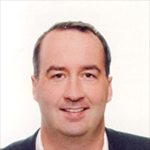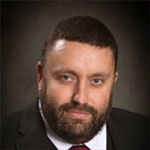Cell and Gene Therapy Symposium: Challenges of Analyzing ATMPs

Quality control of advanced therapy medicinal products (ATMPs - therapies based on genes, tissues or cells) is complex. Due to the nature of the therapy, there is often only a narrow window of time to determine if a product is safe to provide to a patient. You must also consider challenges while scaling these therapies up when increasing the numbers of patients.
During our 1st virtual symposium we posed a question to our audience of “What are your biggest challenges around quality control?” Key answers included: automation, time, data integrity, robustness, and training – some of which we will be covering during this event.
At Bio-Teche we aim to keep everyone connected, communicating and collaborating to advance the cell and gene therapy research and beyond from bench to clinic. We are looking to bring everyone together to discuss these latest developments and technologies.
We have created an exciting agenda with 6 keynote speakers and a Q&A session.
Join us to find out from leading scientists how they are pushing the boundaries of cell & gene therapy research.
| SCHEDULE | AGENDA |
| 2:30-2:35pm |
Introduction - Lindsay Clarke |
| 2:35-2:50pm |
Protein Simple - Chris Heger |
| 2:50-3:05pm |
CCRM - Steven Keizer |
| 3:05-3:20pm |
PaceLabs - Benjamin Buer |
| 3:20-3:35pm |
GAiT - Stephen Sullivan |
| 3:35-3:50pm |
HCAT - David Smith |
| 3:50-4:05pm |
Synthace - Moiz Ebrahimjee |
| 4:05-4:45pm | Q&A |
 |
Lindsey Clarke, Ph.D. |
||||
|
|
|||||
 |
Chris Heger, Ph.D. Advanced therapies, including cell and gene therapies, are continuing to experience challenges associated with development and characterization, as ATMPs become increasingly more complex. Thus, analytical tools that can help streamline one or multiple stages of development and characterization of ATMPs are critical to improving the ‘time to patient’ outlook. |
||||
|
|
|||||
 |
Steven Keizer Brief overview of the challenges within the ATMP development space with respect to the analytical methods intended to provide the feedback into the developing manufacturing processes arising in the living therapies world. This overview will mention the regulatory framework followed by the interpretation of the regulations from a CDMO point of view. |
||||
|
|
|||||
 |
Benjamin Buer, Ph.D. The size and higher order structure of viral particles creates a unique challenge in their use as therapeutics for establishing quality, purity, identity and potency. Discriminating analytical and biophysical tools are key to fully characterizing and understanding routes of protein capsid degradation that are unique to each drug substance on the path to producing a stable gene therapy and meeting rigorous safety guidelines. In this symposium, we will discuss analytical and biophysical strategy to characterize viral vector-based gene therapies and ensure stability of viral capsid proteins in solution. |
||||
|
|
|||||
 |
Stephen Sullivan Ph.D. MBA Global Alliance for iPSC Therapies Use of clinical-grade human induced pluripotent stem cell (iPSC) lines as a starting material for the generation of cellular therapeutics requires demonstration of comparability of lines derived from different individuals and in different facilities. This requires agreement on the critical quality attributes of such lines and the assays that should be used. |
||||
|
|
|||||
 |
David Smith, MEng, Ph.D. We will take a dive into how the quality control labs look today, before taking a look into the crystal ball to identify a future state. By understanding the needs of the future manufacturing scenarios, of cell and gene therapy products, we can predict the quality control requirements to include cost drivers, footprint, equipment and above all accuracy of our safety measurements. |
||||
|
|
|||||
 |
Moiz Ebrahimjee Optimised analytical processes and techniques are critical to the robustness of our product and overall departmental efficiency. We are all constrained by time and resources. |
||||

